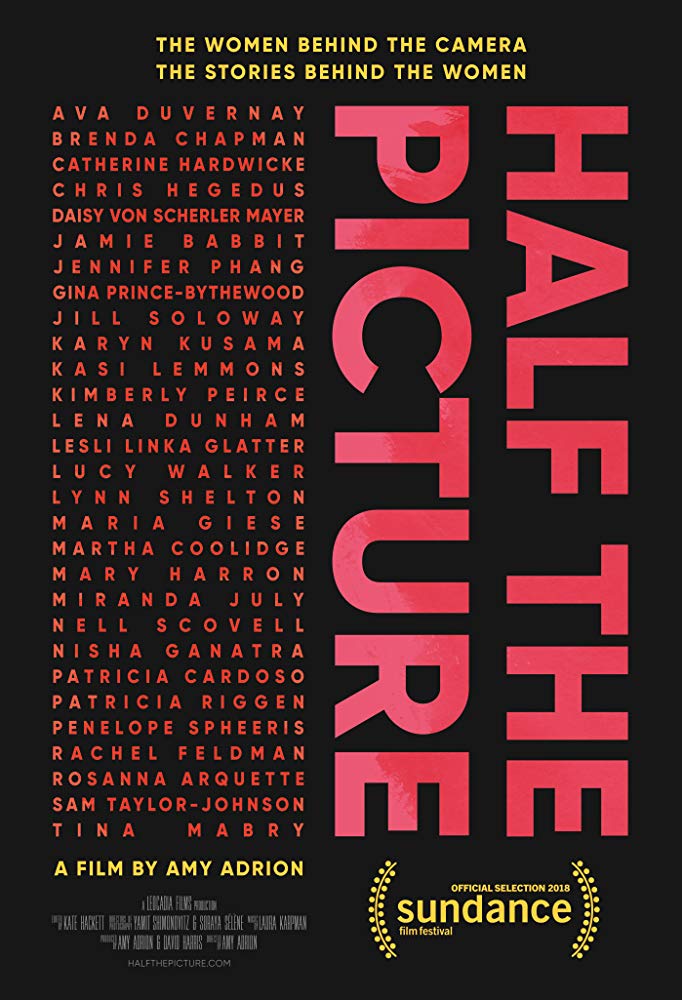Half The Picture (2018)


SHOULD I SEE IT?
YES
A sobering, frustrating, but important and necessary documentary tackling the problem of a lack of female directors in Hollywood.
With nearly 40 female directors, publicists, writers, and producers, Half The Picture has an impressive array of filmmakers telling the stories behind the stories not being told.
The reality is that those who make big decisions in Hollywood and mainstream television have done little, if anything, to change their practices. Half The Picture simply is trying to bring the disparities to light.
NO
For some, this might be a disappointment. Director Amy Adrion uses the continual interview approach for her documentary, and while dense with content and information, the film feels like perhaps it could have been more unconventional in achieving its purpose.
You truly believe that there is no lack of equity and access for women in Hollywood and think this whole thing is entirely overblown.
You take offense when women speak up for themselves.
OUR REVIEW
The numbers are as staggering as they are maddening. Of the 442 directors nominated for an Academy Award for Best Director, just five are women, and only one, Kathryn Bigelow, has ever won that most prestigious prize.
In 2017, three percent (3%) of all films released by Hollywood studios were directed by women. Film festivals can see upwards of 35-40% of films directed by women, but that number winnows down considerably once deals are signed and distribution is put in place.
So, what gives? Why is there seemingly such a lack of female filmmakers? And, if there simply are not women interested in telling stories, why is there such a fuss about this problem in the first place?
Half the Picture, a new documentary by Amy Adrion, tackles this topic head on in a formulaic, but effective analysis of the Hollywood machine, and the movie and television business as a whole. An impressive array of filmmakers, agents, and producers do not just share stories, they offer tremendous perspective and insight into how Hollywood has never really been interested in shifting away from a “Boys’ Club” mentality, while showing us, even in 2018, women directors are viewed as little more than a novelty.
The film’s opening sequence is arguably its best and Adrion sets the stage perfectly. Jessica Chastain, at a post-Cannes Film Festival jurors press conference in 2017 remarks that she just watched 20 films in 10 days, and loves the art of cinema and loves being an actor. She then takes those directors to task, troubled by the continual representation of women in movies and television.
Her words are buoyed by nearly three dozen women who appear in Adrion’s film and, as one producer notes, there are plenty of women wanting to tell stories. They simply don’t get the opportunities male counterparts receive when it comes to having them heard.
Adrion walks her subjects through several layers of the movie-making experience. Penelope Spheeris describes how she had a global hit, directing Wayne’s World for Lorne Michaels in 1992, but was not offered the sequel. The same can be said about Catherine Hardwicke, who hit the box office zeitgeist with Twilight, but found herself departing New Moon, the film’s sequel, because of what she publicly referred to as “time restrictions.”

Ava DuVernay talks about how she went from being a movie industry publicist to a director in secret, carefully navigating through the waters of what to say, who to work with, and what to avoid as she tried to complete her first feature, Middle of Nowhere, in 2012.
Then we have Oscar winner Brenda Chapman, a co-director, officially, of Pixar’s Brave. Midway during the production, she was removed from the project for “creative differences,” a fact she carefully tiptoes around for legal reasons. While given a co-director credit, she was told that if Brave won the Animated Feature Oscar it was nominated for, she was not to speak on stage, and simply accept her Oscar, letting co-director Mark Andrews speak on behalf of the production.
Fortunately, Andrews stepped back after his comments and gave Chapman the chance to thank her daughter – the inspiration behind Chapman’s conceptual creation and idea for Brave in the first place.
Though Chapman has an Oscar to her name, her story is replicated in varying degrees throughout the faces and voices Adrion has gathered for her film. The stories are strikingly similar and alarmingly true.
To be fair, Half the Picture could perhaps do more as a documentary. The film is a traditional, dialogue-rich experience where dozens of interviewees have their thoughts crosscut back and forth to adhere to Adrion’s overall thesis. We have the interviews broken up here and there with a smattering of film clips, but this is largely a sit-and-get viewing experience and might diffuse the overall impact for some viewers passively interested in the themes being explored.
For the rest of us, who recognize that female voices lack the amplification in Hollywood to be heard consistently, Half the Picture illuminates a disparity in Hollywood that hashtags and catch phrases can certainly raise awareness about, but, so far, have nary a ripple effect on boardrooms and office executives reticent to change.
Ending on a hopeful note, Adrion’s impressive gathering of talent makes Half the Picture instantly credible, powerful, and galvanizing. One just hopes that those who need to hear these words hear them, and the film accomplishes more than just preaching to the choir.
CAST & CREW
Documentary Featuring: Ava DuVernay, Jill Soloway, Lena Dunham, Miranda July, Catherine Hardwicke, Penelope Spheeris, Gina Prince-Blythewood, Brenda Chapman, Rosanna Arquette, Kimberly Peirce, Martha Coolidge, Nisha Ganatra, Karyn Kusama, Lynn Shelton, Kasi Lemmons, Sam Taylor-Johnson, Tina Mabry.
Director: Amy Adrion
Release Date: June 24, 2018
Gravitas Ventures
